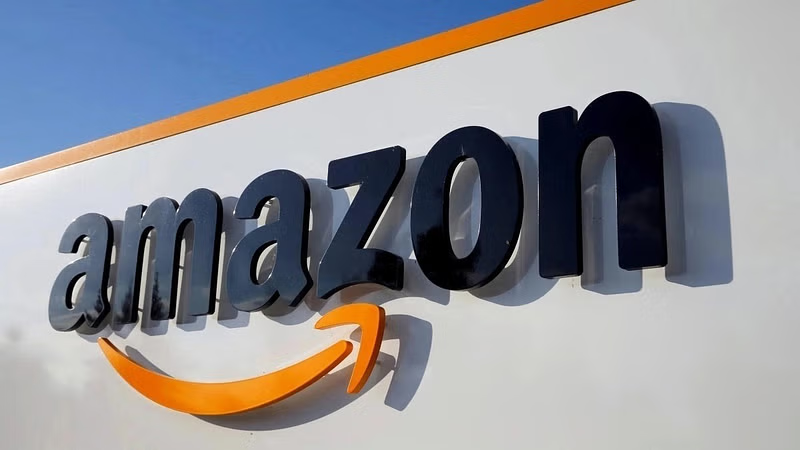Are your Amazon ads driving traffic but failing to turn views into sales?
Most Amazon sellers believe PPC is simple: set a budget, pick a few keywords, and let the ads do the work. But here’s the reality—this “set it and forget it” mindset is one of the biggest reasons ad budgets get drained with little to show for it.
What seems like a straightforward system is full of traps. Running ads without goals, using the wrong keyword match types, or relying on just one campaign strategy can silently eat away at your profits. Worse, small mistakes like skipping negative keywords or shutting off campaigns too early can lead to lost visibility and missed sales opportunities.
In this blog, we’ll break down 10 common and costly Amazon PPC mistakes sellers make—along with simple, smarter ways to fix them. Whether you’re managing ads yourself or working with a team, knowing what to avoid is just as important as knowing what to do. And if you’re ready to take PPC seriously, expert guidance is always within reach.
10 costly Amazon PPC mistakes that are eating up your profits
- Running ads without clear goals
One of the most common and costly Amazon PPC mistakes is launching campaigns without a clear objective. Many sellers start running ads simply to “get more sales,” but without knowing what success looks like, it’s easy to waste money and make poor decisions.
Are you trying to rank a new product? Clear out old inventory? Boost visibility for a seasonal item? Each goal requires a different approach to keywords, targeting, and budgeting. Without a defined goal, your campaigns lack direction, and your metrics become meaningless. Before launching any ad, set a specific target like ACoS, conversions, or impressions and build your strategy around it. Goals drive results.
How to fix this:
To fix this, start by setting a clear goal for each campaign whether it’s boosting sales, launching a new product, or increasing visibility. Choose the right metrics to track, like ACoS, ROAS, or conversions. Then build your campaign structure around that goal. Review performance weekly and adjust based on results. Here, you can opt for the Amazon PPC expert who uses ad types, targeting, and budgets to improve your ranking.
- Using only one type of ad
Many sellers stick to just one ad format, usually Sponsored Products, thinking it’s enough to drive results. However, relying on a single ad type limits your reach and leaves potential sales on the table. Sponsored Products are great for targeting ready-to-buy shoppers, but they don’t build brand awareness or support upper-funnel engagement.
To get the most out of your PPC efforts, you should also use Sponsored Brands to showcase your product range and Sponsored Displays to retarget shoppers. Mixing ad types helps you cover the full customer journey from discovery to purchase and makes your campaigns more effective and scalable.
How to fix this:
Diversify your strategy by combining Sponsored Products, Sponsored Brands, and Sponsored Displays. Each ad type serves a different purpose: visibility, brand awareness, and retargeting. Using them together helps you reach shoppers at every stage of the buying journey and improves overall campaign performance.
- Skipping keyword research
Many sellers skip keyword research, assuming Amazon will automatically show their ads to the right audience. But without proper research, you’re likely targeting the wrong keywords or missing the right ones entirely. This results in low visibility, poor click-through rates, and wasted ad spending.
Effective keyword research helps you understand how shoppers search for products like yours. It also reveals high-converting, low-competition terms that can improve ROI. Use tools like Amazon’s Keyword Planner, Helium 10, or Jungle Scout to build a data-backed keyword strategy that delivers results.
How to fix this:
Skipping keyword research means you’re guessing what shoppers are searching for, often leading to low visibility or wasted spending. To fix this, use tools like Amazon’s Keyword Tool, Helium 10, or Jungle Scout to find high-volume, relevant terms. Here, you can choose the best Amazon expert that focuses on keywords that match buyer intent, and update your list regularly based on performance and search trends.
- Not using negative keywords
Not using negative keywords is one of the most overlooked and costly mistakes in Amazon PPC. Without them, your ads may show up for irrelevant searches, leading to clicks that never convert. Every unqualified click wastes your budget and lowers your overall campaign performance.
For example, if you sell premium leather wallets, you don’t want to show up for “cheap wallets” or “wallet DIY kits.” By regularly reviewing search term reports and adding irrelevant terms as negative keywords, you can filter out junk traffic, improve targeting, and stretch your ad spend further.
How to fix this:
Regularly review your search term reports and identify keywords that aren’t converting or are unrelated to your product. Add these as negative keywords to prevent future waste and ensure your ads reach the right audience.
- Relying only on manual or only on auto campaigns
Relying only on manual or only on auto campaigns limits your ability to scale and optimize effectively. Auto campaigns help you discover new keywords, while manual campaigns give you control over bids and targeting.
If you use just one, you’re either missing out on valuable insights or wasting your budget on low-performing terms. The smartest strategy is to use both together: auto for discovery, and manual for precision. This balance helps improve performance, reduce wasted spend, and increase overall ad efficiency.
How to fix this:
To fix this, use a hybrid campaign strategy that combines both manual and auto campaigns. Auto campaigns help uncover new keyword opportunities, while manual campaigns let you control bids and target high-converting terms. Regularly review your auto campaign reports, then move strong-performing keywords into manual campaigns for better control and efficiency. This balanced approach helps improve performance and reduce wasted spend.
- Poor product pages
Even the best Amazon ads won’t convert if your product page doesn’t do its job. Driving traffic is only half the battle once shoppers land on your listing, they need to be convinced to buy. Low-quality images, weak titles, missing details, or poor reviews can instantly kill conversions.
If your product page doesn’t match the promise of your ad, you’re wasting clicks and budget. Always make sure your listing is optimized before scaling your PPC campaigns.
How to fix this:
A great ad means nothing if your product page doesn’t convert. To fix this, ensure your listings have clear titles, high-quality images, strong bullet points, and A+ Content. Highlight key benefits, address common objections, and make the value obvious. A strong page turns clicks into actual sales.
- Wasting budget on bad keywords
Spending money on keywords that don’t convert is one of the fastest ways to burn through your Amazon ad budget. These “bad keywords” might bring clicks, but if they don’t lead to sales, they’re costing you more than they’re worth. Often, sellers don’t review their search term reports regularly, allowing low-performing or irrelevant keywords to keep draining spend.
How to fix this:
Regularly review your search term reports and pause underperforming keywords. Focus your budget on high-converting, relevant terms, and add poor performers to your negative keyword list to prevent future waste. Optimize weekly to keep your spending efficient.
- Too many overlapping campaigns
Running multiple campaigns with similar keywords or targeting the same products can lead to internal competition. This means you’re essentially bidding against yourself, driving up costs without improving performance.
It also makes it harder to track which campaign is working. Instead of spreading your budget thin, focus on a clear campaign structure with distinct goals for each. This keeps performance easier to manage and ensures your ad spend is going where it matters most.
How to fix this:
To fix this, audit your campaigns regularly. Consolidate similar campaigns targeting the same keywords or products. Use portfolio structures and clear naming to stay organized. This helps improve performance tracking and ensures your budget is spent more effectively.
- Turning off old campaigns too soon
It’s tempting to pause older campaigns that aren’t performing right away but doing so too soon can cost you valuable data and potential long-term gains. Amazon’s algorithm needs time to learn and optimize, especially for new products or keywords.
Cutting a campaign before it has enough data may stop it just before it starts gaining traction. Instead of turning it off, analyze performance trends over time, adjust bids or keywords, and give it time to stabilize. Patience and smart tweaks often turn underperforming campaigns into steady profit drivers.
How to fix this:
Turning off old campaigns too soon can cut off valuable data and disrupt your sales momentum. Instead of pausing them right away, let them run alongside new campaigns for a while. Analyze long-term performance trends, not just short-term dips. Gradually shift the budget if needed, but always use data not guesswork to decide when a campaign has run its course.
- Not watching your budget and bids
One of the most common (and costly) mistakes in Amazon PPC is setting a budget and forgetting about it. Without regular monitoring, you could overspend on low-performing keywords or miss out on high-converting ones due to low bids.
Your budget can run out early in the day, or your bids might not be competitive enough to win placements. To stay profitable, review your spending, adjust bids strategically, and use placement reports to guide your decisions.
How to fix this:
Not tracking your budget and bids can quickly drain your profits. To fix this, set clear daily and campaign-level budgets, and monitor your ACoS regularly. Use dynamic bidding strategies and adjust bids based on performance.
Tools like Amazon’s Campaign Manager or third-party software can help automate and optimize bidding to keep your ad spend under control.
Wrap up
Amazon PPC can be a powerful tool but only when used strategically. The mistakes outlined above may seem small, but together they can quietly drain your budget, lower your profits, and hold back your brand’s growth.
From unclear goals to ignored search term data, every misstep costs you visibility and sales. Every one of these mistakes can be fixed with the right approach, regular monitoring, and a structured plan.
If you’re overwhelmed or unsure where to start, a full Amazon consultancy can help. Experts handle everything from audits to ongoing tweaks, making your ads work smarter and bringing in real profits.

